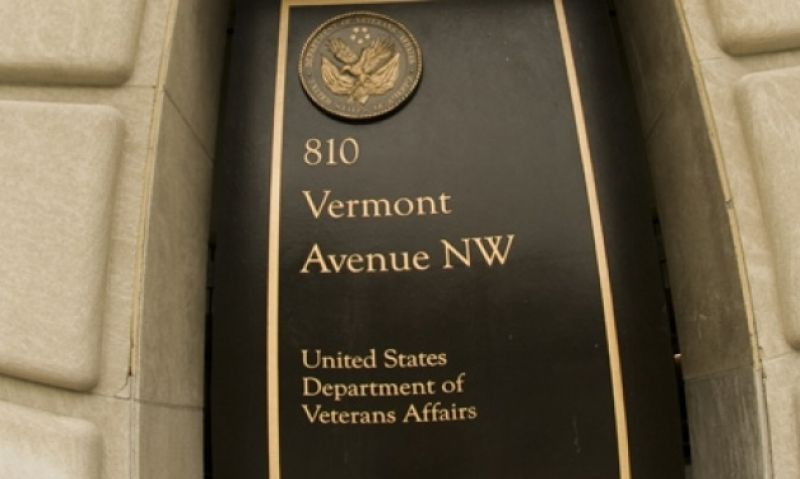
Department of Veterans Affairs undertaking a plan to distribute vaccines to more than 418,000 employees and 10 million enrolled patients , a task one VA official called a 'Herculean effort...'
The Department of Veterans Affairs released a final plan Tuesday detailing the order in which veterans and staff will receive coronavirus vaccines as doses become more widely available.
The VA is undertaking a plan to distribute vaccines to more than 418,000 employees and 10 million enrolled patients — a task one VA official called a “Herculean effort.”
The department received 73,000 doses of the Pfizer vaccine this week and vaccinated its first patient Monday — a 96-year-old World War II veteran living in the department’s long-term community living center in Massachusetts. Residents and staff of those community living centers, as well as VA spinal cord injury centers, will be the first to be vaccinated. There are about 17,500 veterans living in those centers across the country.
After the first vaccines are distributed, the VA will shift its focus to vaccinating VA employees who treat coronavirus patients. This includes emergency department staff and health care workers in coronavirus intensive care units.
“VA employees have provided life-saving Covid-19 care to thousands upon thousands of people, and the department continues to play a crucial role in the nation’s response to the pandemic,” VA Secretary Robert Wilkie said in a statement Tuesday. “Dedicated professionals across many fields contributed to this plan, which will ensure a safe, evidence-based and equity-focused vaccine rollout for VA frontline workers and Veterans.”
After those phases of distribution, the VA will vaccinate veterans and staff living in other nursing facilities that don’t yet have access to vaccines. The department estimates about 20,000 veterans will be included in this group.
According to the plan, the VA is not responsible for providing vaccines to state-run veterans’ homes, many of which have experienced deadly outbreaks of the virus. If state-run veterans’ homes want help vaccinating residents, they’ll have to request assistance through the Federal Emergency Management Agency. The VA could then be called on to provide help under its Fourth Mission to serve as backup for the American medical system.
“If VA receives a request for assistance, the Secretary of Veterans Affairs will review and decide whether to accept this responsibility through a [fourth] mission assignment,” the plan states.
The department has been accused of shirking responsibility for the homes during the pandemic. Though the VA does have a role overseeing the homes, Wilkie has said multiple times that he doesn’t have direct authority over them.
More than 19,000 veterans and their families live in state-run veterans’ homes, and it’s uncertain how many people in those facilities have died. The VA does not include the homes in its data of coronavirus cases and deaths.
Once it’s done with nursing homes, the VA plans to vaccinate health care workers who aren’t in coronavirus units, as well as other hospital employees, such as police, food services workers and administrative staff.
All other VA essential workers, as well as homeless veterans, patients on dialysis, organ transplant patients and veterans undergoing chemotherapy are next on the list. The VA estimates there are about 242,000 homeless veterans, 340,000 with chronic kidney disease and 544,000 with cancer.
After that, the VA will start vaccinating patients based on their age, with those 85 and older going first. Veterans ages 50 and younger will be the last to receive a vaccine. During this phase of vaccinations, the VA plans to prioritize veterans who have high-risk conditions, such as cancer, obesity, diabetes or heart disease. The department estimates that about 2.3 million veterans are obese, 2.7 million have heart disease and 1.6 million have diabetes.
Black, Hispanic and Native American veterans will also be prioritized. According to VA data, minority veterans are disproportionately affected by the virus. About 1.4 million Black veterans and 600,000 Hispanic veterans are enrolled in the VA.
Richard Stone, executive in charge of the Veterans Health Administration, testified before the Senate Veterans’ Affairs Committee last week about the department’s strategy. He predicted difficulty distributing the Pfizer vaccine, especially to veterans in rural areas. The issue is refrigeration, Stone said. The Pfizer vaccine must be frozen at 94 degrees below zero.
The VA won’t be able to reach all veterans with only the Pfizer vaccine alone, Stone predicted. The Moderna vaccine, which is slightly behind Pfizer in the approval process, does not require ultra-low refrigeration. The department has readied 200 sites to administer the Moderna vaccine and ordered 122,000 doses.
“I’m going to need the Moderna vaccine and the 200 sites I’m going to have for Moderna in order to reach the rural veteran,” Stone said.
According to the plan released Tuesday, nearly 1 million VA patients are living in areas considered as rural.
The 73,000 doses distributed to the VA this week went to 37 sites, mostly in areas with high veteran populations, such as Washington, Dallas and Cleveland.
Members of The American Legion can receive 50 percent discounts on annual subscriptions to the Stars and Stripes digital platform of exclusive military news, topics of interest to veterans, special features, photos and other content, including the daily e-newspaper, job listings and history. American Legion members can subscribe for $19.99 a year by visiting legion.stripes.com and using the coupon code LEGIONSTRONG when filling out the online form.
- Veterans Healthcare

